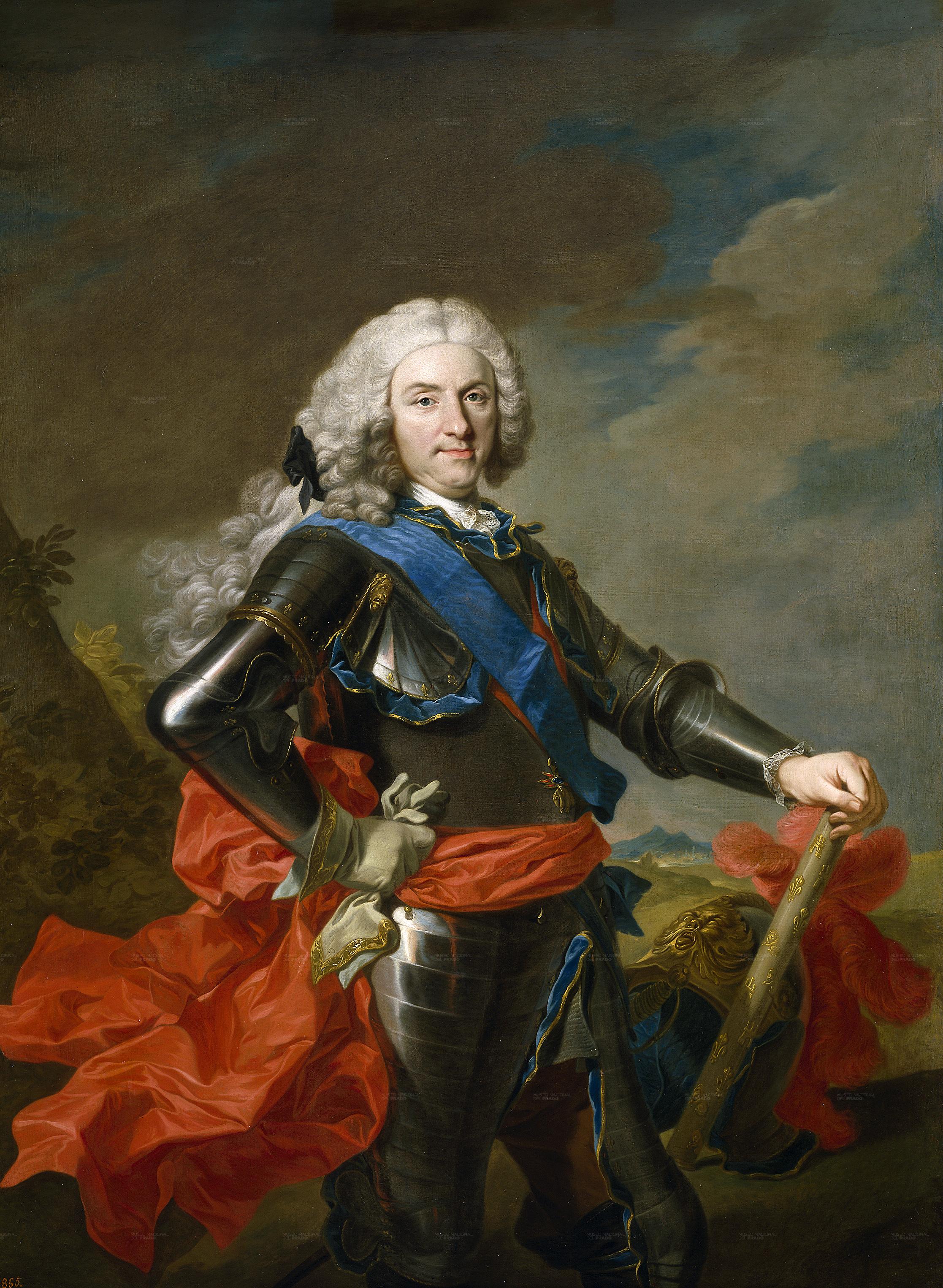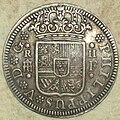
Philip V of Spain
Philip V (Spanish: Felipe; 19 December 1683 – 9 July 1746) was King of Spain from 1 November 1700 to 14 January 1724 and again from 6 September 1724 to his death in 1746. His total reign (45 years and 16 days) is the longest in the history of the Spanish monarchy, surpassing Philip IV. Philip V instigated many important reforms in Spain, most especially the centralization of power of the monarchy and the suppression of regional privileges, via the Nueva Planta decrees, and restructuring of the administration of the Spanish Empire on the Iberian Peninsula and its overseas regions.[1]
"Philip of Anjou" redirects here. For other uses, see Philip of Anjou (disambiguation).Philip V
1 November 1700 – 15 January 1724
6 September 1724 – 9 July 1746
Louis I
1 November 1700 – 7 March 1714
1 November 1700 – 10 May 1713
Maximilian II Emanuel, Elector of Bavaria (1700–1706)
Philippe de France, Duke of Anjou
19 December 1683
Palace of Versailles, Kingdom of France
9 July 1746 (aged 62)
Madrid, Kingdom of Spain
Philip was born into the French royal family (as Philippe, Duke of Anjou) during the reign of his grandfather Louis XIV. He was the second son of Louis, Grand Dauphin, and was third in line to the French throne after his father and his elder brother, Louis, Duke of Burgundy. Philip was not expected to become a monarch, but his great-uncle Charles II of Spain was childless. Philip's father had a strong claim to the Spanish throne, but since Philip's father and elder brother were expected to inherit the French throne, Charles named Philip as his heir presumptive in his will. Philip succeeded in 1700 as the first Spanish monarch of the House of Bourbon.
In 1701, the new king married his second cousin Maria Luisa of Savoy, with whom he had four sons. Their two surviving sons were the future Spanish kings Louis I and Ferdinand VI. Maria Luisa died in 1714, and Philip remarried to Elisabeth Farnese. Philip and Elisabeth had seven children, including the future Charles III of Spain; Infanta Mariana Victoria, who became Queen of Portugal; Infante Philip, who became Duke of Parma; and Infanta María Antonia Fernanda, who became Queen of Sardinia. It was well known that the union of France and Spain under one monarch would upset the balance of power in Europe, and that other European powers would take steps to prevent it. Philip's accession in Spain provoked the 13-year War of the Spanish Succession, which continued until the Treaty of Utrecht forbade any future possibility of unifying the French and Spanish crowns while confirming his accession to the throne of Spain. It also removed the Spanish Netherlands and Spanish-controlled territories in Italy from the Spanish monarchy. In 1724, Philip abdicated in favor of his son Louis. The new king died later that year, and Philip took the throne again. As a result of his depression, Queen Elisabeth held control over the Spanish government. When Philip died in 1746, he was succeeded by his son Ferdinand.
Phillip's reign has been generally criticized by historians, though some praise is occasionally offered for his reforms. Historian Stanley G. Payne wrote that "Felipe V was a neurotic, vacillating ruler, concerned with outward decorum and brave only in battle. He had little sense of Spanish interests and needs."[2]






